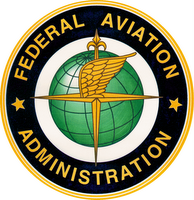10.25.2006
Evaluating FAA
 When it comes to space, the FAA means business. It also means safety and promotion.
When it comes to space, the FAA means business. It also means safety and promotion.So how's the agency doing so far? In a GAO study titled, Commercial Space Launches: FAA Needs Continued Planning and Monitoring to Oversee the Safety of the Emerging Space Tourism Industry (GAO-07-16/Oct. 2006), the ol' audit, evaluation and investigative arm of Congress took a look at FAA’s safety oversight processes, talked to federal and industry officials and then evaluated the FAA on: "(1) safety oversight of commercial space launches, (2) response to emerging issues, and (3) challenges in regulating and promoting space tourism and responding to competitive issues affecting the industry.
The verdict? On the whole, so far so good. GAO found "FAA has provided a reasonable level of safety oversight for commercial launches", the agency's "licensing activities incorporate a system safety process, which GAO recognizes as effective in identifying and mitigating risks" and "the agency is appropriately applying management controls in its licensing activities, thereby helping to ensure that the licensees meet FAA’s safety requirements."
In connection with "emerging issues" including "the potential development of space tourism, FAA has developed safety regulations and training for agency employees."
Of course, "industry has raised concerns about the costs of complying with regulations and about the flexibility of the regulations to accommodate launch differences." But GAO notes, "FAA believes it has minimized compliance costs by basing its regulations on common safety standards and has allowed for flexibility by taking a case-by-case approach to licensing and by providing waivers in certain circumstances."
What does GAO see as some of the challenges for FAA? The agency "expects to need more experienced staff for safety oversight as new technologies for space tourism evolve, but has not estimated its future resource needs. Other challenges for FAA include determining the specific circumstances under which it would regulate space flight crew and passenger safety before 2012 and balancing its responsibilities for safety and promotion to avoid conflicts."
What about the launch record? GAO found that while "FAA has met its annual performance goal to have no fatalities, serious injuries, or significant property damage to the public during licensed space launches and reentries since establishing this goal in 2003," the oversight folks noted of 179 launches, FAA had joint oversight responsibility with other federal agencies for 152 (about 85 percent) and sole responsibility for 27 (about 15 percent). GAO noted "challenges that FAA faces in the future in assuming sole responsibility for launch safety oversight at spaceports" and the "challenge of ensuring that its 2006 regulations on licensing and safety requirements for launch, which are based on the Air Force’s safety requirements for expendable launch vehicle operations at federal launch sites, will be suitable not only for operations at federal launch sites, but also for operations at spaceports."
GAO also considered "key competitive issues affecting the U.S. commercial space launch industry, and to what extent are the industry and government responding to them..."
And GAO looked ahead to the 2008 DOT report that will address, inter alia, "whether the promotion of human space flight should be separate from the regulation of such activity." GAO "suggests that Congress revisit FAA’s promotional role and decide whether it should be eliminated. GAO recommends that FAA assess its future safety oversight resource needs and identify the circumstances that would trigger passenger safety regulation before 2012."
Lots of interesting kitchen sink-type stuff in this report, too, including the sections, FAA’s Launch and Reentry Licensing Process (Appendix III) and Timeline and List of FAA Commercial Space Launch Rulemaking and Guidance (Appendix IV).
Have a look. (If nothing else, the report stands in great contrast to other, less than favorable GAO studies of government space activities.)
* *
(Hat tip: Clark at HobbySpace)
* * *
UPDATE: By the way, speaking of FAA, in case you missed it in New Mexico, here is FAA Administrator Marion C. Blakey's "All Systems Go" keynote which she delivered last week at the Wirefly X-Prize Cup Executive Summit. I especially like the part where she called the Commercial Space Launch Amendments Act of 2004 "the most sweeping space law since the days of buzz cuts and Tang." Ah.
And after the speech, Ms. Blakey, along with FAA associate administrator for commercial space transportation, Patricia Grace Smith, had a nice chat about FAA space transportation safety and regulation with Alan Boyle. Some reporters have all the fun.






